How Many Of Us Are There?
How Many Gay People Are in the US?
By Michael Alvear
Author & columnist, featured on HBO, NPR, and in The New York Times
Ever think about the size of the gay community in the United States? Ever wondered, "Just how many gay people live in our country?" Or what percentage of the population is gay?
Well, you're not alone. A lot of folks, including social scientists, policymakers, and advocates, have wondered the same thing. And they all agree: It's not just a matter of curiosity. Knowing the size of the gay community is crucial for making policies, designing services, and understanding our diverse society.
Yet, pinning down an exact number is not easy. Think about it: People are diverse. Communities are diverse. And how people identify themselves can change over time. Plus, not everyone is comfortable sharing their sexual orientation with a researcher or in a survey.
So, how can we estimate the size of the gay community in the U.S? We can turn to a range of statistical methods and research studies for answers. And that's precisely what we're doing in this article.
We're diving into the ways researchers have tried to estimate the size of the gay community, the challenges they've faced, and the results they've found. We're exploring the strengths and limitations of different statistical methods, how privacy concerns and biases can affect data, and how new technologies could change the way we gather this information.
By the end of this exploration, we'll have a better understanding of why it's tough to pin down an exact number and why the journey to find that number is just as important as the estimate itself. So, let's start digging into the complexities and nuances of estimating the size of the gay community in the U.S. Let's begin this fascinating journey together.
The Gay Population In The U.S. According To 5 Studies
Why Need To Know How Many Gay People There Are
The First Problem in Counting: What Qualifies As Gay?
Why Earlier Studies (Like Kinsey) Were Wrong
Modern Approaches to Counting the Gay Population
Issues That Guarantee Undercounting No Matter Who Does The Studies
Methods Studies Use To Count The Gay Population (and what's wrong with them!)
Three Studies Using Three Different Survey Methods
Why Accurate Data on the Gay Population Matters
How We'll Count The LGBT Population In The Future
The Importance of Knowing How Many of Us There Are
Getting a grip on just how many LGBT folks there are in the US can be a real eye-opener, especially for those feeling like they're going at it solo. Picture this: you're growing up, thinking you're the only one who feels the way you do, and it's like you're stuck on an island. That kind of isolation can really mess with your head, planting seeds of self-doubt and even self-hatred.
Studies have shown that this "I'm the only one" thinking (or even, "I'm one of the few") feeds the kind of internal homophobia that results in some pretty awful statistics:
Gay men are 300% more likely to experience depression and 113% more likely to suffer from anxiety disorders. The toll on physical health is equally grim, with a 142% higher likelihood of developing Inflammatory Bowel Disease and a 200% increase in the risk of eating disorders.
The impact extends to addiction, with rates of alcoholism and substance abuse 178% and 122% higher, respectively. Moreover, gay men face a staggering 200% higher risk of homelessness and a heartbreaking 316% increase in the likelihood of suicide.
So, what does knowing you're one in tens of millions do? It shines a light at the end of what might feel like an endless tunnel. Understanding you're part of a vast, vibrant community can be a lifeline, turning 'I'm the only one' into 'I'm one of many.' This sense of belonging can chip away at the isolation and self-hatred that feed those grim health stats.
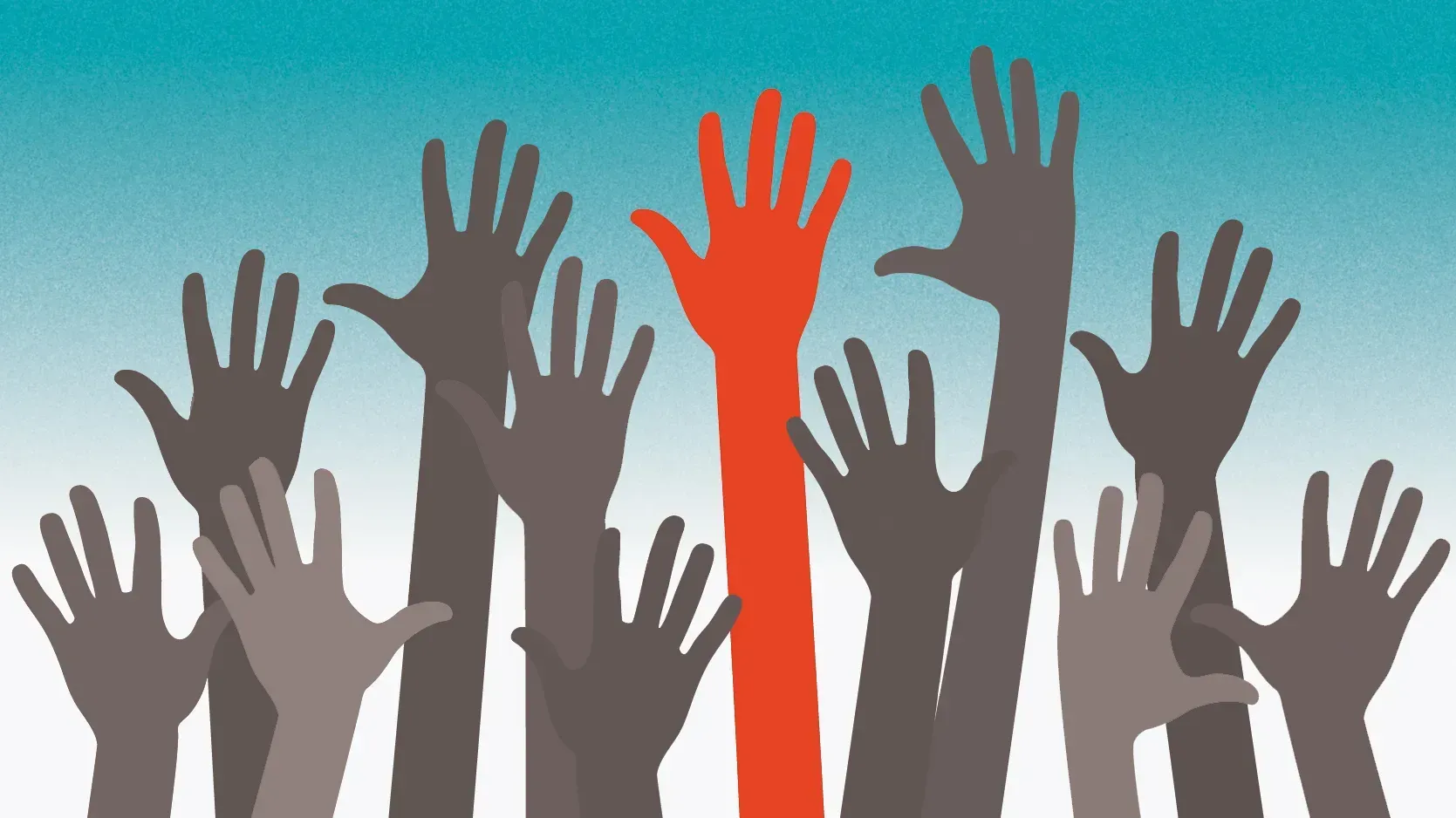
Five Reliable Studies On The Gay Population In The U.S.
How Many Adults Identify as LGBT in the United States? (2021) by the Williams Institute:
This study estimated that there were 11.3 million LGBT adults in the US, or 4.5% of the total population.
Click here to download their fact sheet, which breaks out gay populations by state
LGBT Adults in the United States (2022) by Gallup:
This study estimated that there were 11.7 million LGBT adults in the US, or 4.7% of the total population.
LGBT Americans in Changing Times (2022) by the Pew Research Center:
This study estimated that there were 11.9 million LGBT adults in the US, or 4.8% of the total population.
State of the State of LGBT Equality (2022) by the Human Rights Campaign:
This study estimated that there were 12.1 million LGBT adults in the US, or 4.9% of the total population.
The State of LGBT Health in the United States (2022) by the Center for American Progress:
This study estimated that there were 12.3 million LGBT adults in the US, or 5.0% of the total population.
| Study | LGBT Population | % of Total Population |
|---|---|---|
| Gallup | 11.7 million | 4.7% |
| Pew Research Center | 11.9 million | 4.8% |
| Human Rights Campaign | 12.1 million | 4.9% |
| Center For American Progress | 12.3 million | 5.0% |
| Williams Institute | 11.3 million | 4.5% |
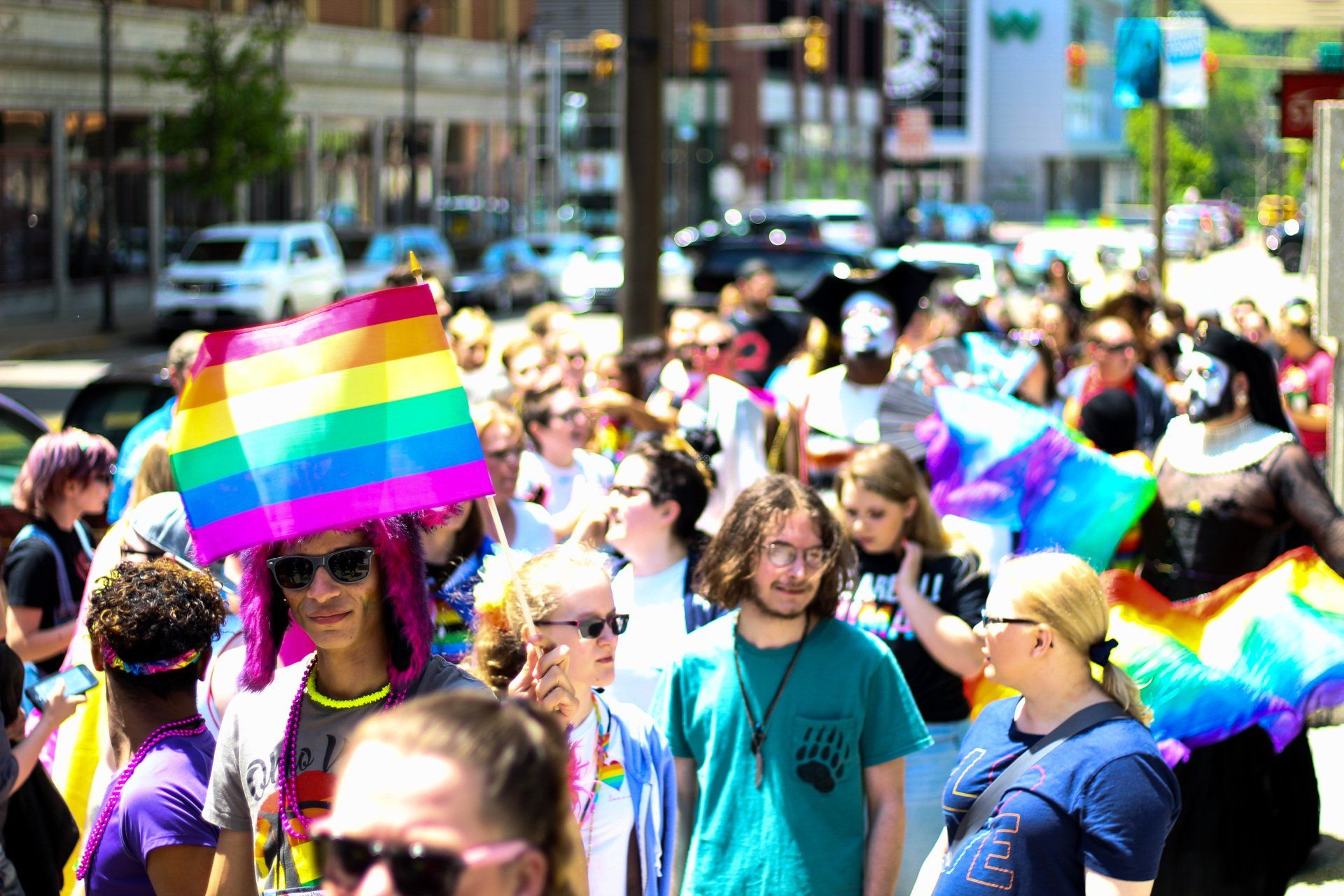
More Than Just a Numbers Game
Counting people might sound like a straightforward task, like counting apples in a basket. But when it comes to determining how many people are gay in the U.S., it's a whole different ballgame. There are several reasons for this.
First, understanding sexuality isn't as simple as it might seem. It's a spectrum, not a black-and-white matter. People identify themselves in a variety of ways, and these identifications aren't always neatly categorized. Some folks might identify as gay, others as bisexual, others may not put a label on their sexuality at all.
Secondly, not everyone is comfortable sharing their sexual orientation. Despite progress in societal attitudes, prejudice and discrimination still exist. This can make people wary of openly identifying as gay, especially in formal contexts like surveys or censuses.
Why Should We Care About the Numbers?
You might wonder why it's so important to know how many people are gay. It's not just about satisfying our curiosity, although understanding our diverse society is interesting in itself. Accurate data on the gay population has a number of practical uses.
One major area is policy-making. Laws that affect the gay community, such as those regarding marriage equality, adoption rights, or protections against discrimination, are informed by data on the size of this population. The more we understand about the number of people these policies affect, the better we can tailor them to meet the community's needs.
Another key aspect is resource allocation. Various services and programs, like mental health support or community outreach initiatives, need funding to operate. Knowing the size of the gay population can help ensure that appropriate funds are allocated to these vital services.
Finally, having a clearer picture of the gay population can help raise awareness of the need for broader societal acceptance and equality. It can highlight the importance of understanding and celebrating diversity, rather than fear or ignore it.
Unraveling the Mystery: How Do We Count?
Finding the answer to how many people are gay in the U.S. involves diving into the different ways researchers collect this data. We'll explore methods like population-based surveys, online data collection, and other experimental techniques, and see how effective each one is at getting us to the truth.
Each method has its own strengths and weaknesses. For example, population-based surveys can reach a large number of people, but they might not be as effective in reaching certain subgroups within the gay community.
Online data collection might offer anonymity that encourages more honest responses, but it's dependent on internet access, which isn't evenly distributed in all areas or among all demographics.
Despite the challenges, each successful count adds another piece to the puzzle. And with each piece, we move closer to a fuller understanding of the number of gay individuals in our society.
Understanding Sexual Orientation
Let's start by understanding what we mean when we talk about being gay.
Being gay is one aspect of sexual orientation, which is about who you're attracted to emotionally, romantically, or sexually. Some people are attracted to people of the opposite sex (heterosexual), some to people of the same sex (homosexual or gay/lesbian), and some to both (bisexual).
There are other identities too, like asexual (those who don't experience sexual attraction) and pansexual (those who could be attracted to any gender).
Labels and Identity
It's important to remember that these labels are self-chosen. People decide for themselves which, if any, labels fit their feelings best. Some folks might feel that they fit into the 'gay' label, while others might prefer 'queer' or something else. And there are people who choose not to use any labels at all. It's all about what makes each person feel most comfortable.
It's Not Just About Who You're Attracted To
When we're talking about being gay or not, it's not just about who a person is attracted to. There are actually three aspects we have to think about.
First, there's a person's sexual attraction (who they find physically or emotionally attractive).
Second, there's sexual behavior (who a person has sexual contact with).
Third, there's sexual identity (the words a person uses to describe their own sexuality).
Each of these can be different for any given person. For example, a person might feel attraction to both men and women, only have sexual contact with women, and identify as straight.
This makes figuring out how many people are gay even more complex, but it also makes our understanding of human sexuality much richer.
Why is This Important?
Understanding these aspects is really important when we're trying to figure out how many people are gay. This is because different studies might focus on different aspects.
Some might ask about sexual identity, others about sexual behavior. This means that different studies can end up with different numbers, but that doesn't mean they're wrong - they're just looking at different things.
So, as we delve into different ways of counting the number of gay people, keep these things in mind. It'll help us understand why this task isn't as easy as it first appears, and why different methods can end up with different answers.
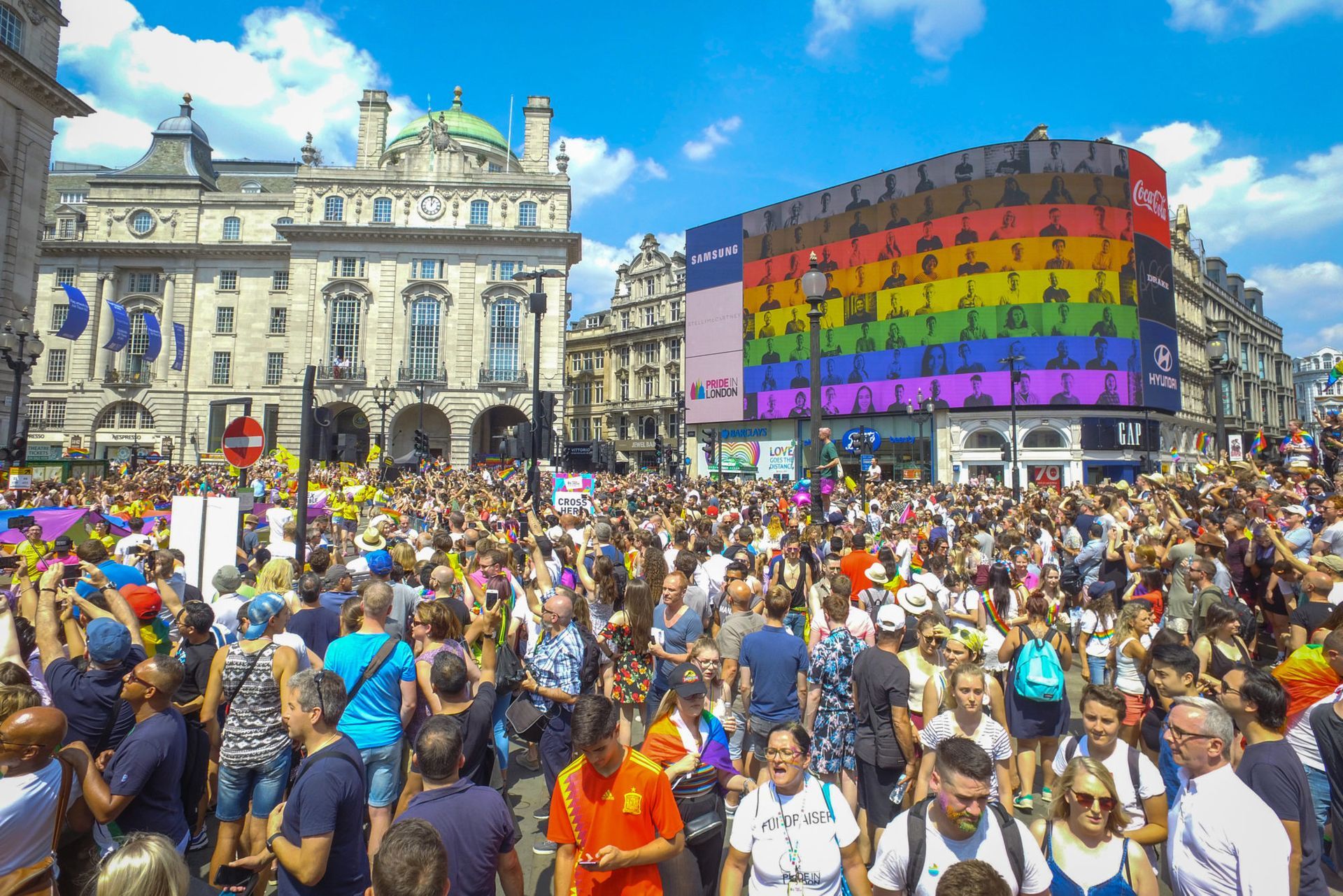
The First Steps: Initial Challenges and Missteps
Decades ago, when researchers and social scientists first tried to estimate the number of gay individuals, they stumbled upon a series of hurdles. Unlike counting the number of people with brown hair or blue eyes, quantifying people based on their sexual orientation was not a straightforward task.
Firstly, societal attitudes towards homosexuality were much different back then. Openly identifying as gay was often met with discrimination, prejudice, or even legal repercussions. As a result, many people chose to conceal their sexual orientation, making it harder to get an accurate count.
Additionally, the understanding of human sexuality was still in its infancy. The concept that sexuality could exist on a spectrum, rather than a binary choice between being heterosexual or homosexual, was not widely accepted. This lack of nuanced understanding added further complexities to these initial efforts.
The Kinsey Reports: Groundbreaking But Flawed
Among the early attempts to understand human sexuality, the Kinsey Reports stand out. Published in 1948 and 1953 by Alfred Kinsey and his team, these reports suggested that same-sex attractions and behaviors were far more common than previously thought.
However, these groundbreaking studies were not without their flaws. For one, Kinsey's sample was not representative of the general population. He relied heavily on certain groups, such as prisoners and sex workers, which likely skewed the results. Also, the methods of collecting data, which involved in-depth personal interviews, could have led to biases in the data.
Despite these limitations, the Kinsey Reports were revolutionary in their time. They shattered prevailing beliefs about sexuality and sparked a wave of research in this field.
Beyond Kinsey: The Limitations of Early Studies
Numerous other studies followed Kinsey's, each trying to shed light on the question of how many people are gay. However, these studies, too, grappled with methodological limitations.
Some studies used small sample sizes, which reduced the reliability of their findings when applied to the general population. Others relied on methods that might not have been entirely accurate, such as retrospective self-reporting, which required participants to accurately recall and report past behaviors or feelings.
Additionally, there may have been inconsistencies in how these studies defined 'gay.' Some may have included people who experienced any same-sex attraction or engaged in any same-sex behavior, while others might have only included those who exclusively experienced same-sex attractions. This lack of a standard definition could have led to differences in estimates across studies.
Early Efforts: Laying the Foundation for Modern Research
Despite the various limitations and challenges, these early studies played a pivotal role in shaping our understanding of human sexuality. They highlighted the fact that the gay population was likely larger and more diverse than society had previously recognized.
More importantly, these early research efforts sparked an ongoing conversation about how to accurately quantify the gay population. They highlighted the need for more sophisticated and nuanced methods of data collection, setting the stage for the more advanced techniques used in modern research. In their wake, researchers continue to refine their methodologies, improving our ability to answer the question: How many gay people are there in the United States?
Modern Approaches to Counting the Gay Population
The Rise of Large-Scale Surveys
In the wake of early research efforts, researchers began using large-scale surveys to better estimate the gay population. This method allows for the collection of data from a large, diverse group of people, providing a more comprehensive snapshot of the population.
Major national surveys, such as the General Social Survey (GSS) and the National Survey of Family Growth (NSFG), began to include questions about sexual orientation. This marked a significant step towards recognizing and understanding the size and diversity of the gay population.
However, large-scale surveys also have their limitations. They rely on self-reported data, which means people need to feel comfortable sharing their sexual orientation. If a person is not open about their sexuality, they might not report it accurately on a survey. Also, these surveys only reach people who have access to the survey medium, like the internet or mail, which might leave some groups out.
Emergence of Online Data Collection
With the advent of the digital age, online data collection has emerged as a popular tool in gathering information about sexual orientation. Online surveys can be anonymous, which might encourage more honest responses from participants who might otherwise be hesitant to disclose their sexual orientation.
Social media platforms and search engine data also offer an interesting avenue for collecting data. By analyzing trends and patterns in people's online behavior, researchers can infer information about the gay population. However, this approach is fraught with privacy concerns and potential biases, as not everyone has equal access to the internet, and online behavior might not accurately reflect one's real-life identity.
Experimental Techniques and Innovative Approaches
As research into understanding the gay population has evolved, so have the techniques used to gather data. One innovative approach is the use of indirect questioning techniques, such as the "veiled report" method.
This method asks participants to answer a series of sensitive questions, including their sexual orientation, but the responses are aggregated so that individual answers remain anonymous. This approach aims to reduce the social desirability bias, where participants might feel pressured to answer questions in a socially acceptable way.
Interpreting Data: Unpacking the Complexities
Interpreting the data collected through these various methods is a complex task. Differences in how studies define 'gay,' what aspect of sexuality they measure (attraction, behavior, or identity), and who they include in their sample can all lead to different estimates.
For example, a survey that asks about sexual behavior might yield a higher estimate than one asking about sexual identity, as some individuals might engage in same-sex behavior but not identify as gay.
Similarly, a survey conducted online might yield a different estimate than one conducted by mail, as the demographics of internet users and mail respondents might differ.
Putting the Pieces Together: A Composite Picture
Despite the variety of methods and their respective challenges, each contributes valuable pieces to the puzzle of understanding how many people are gay in the United States. By comparing and contrasting the findings from different methods, we can build a composite picture that reflects the diversity and complexity of the gay population.
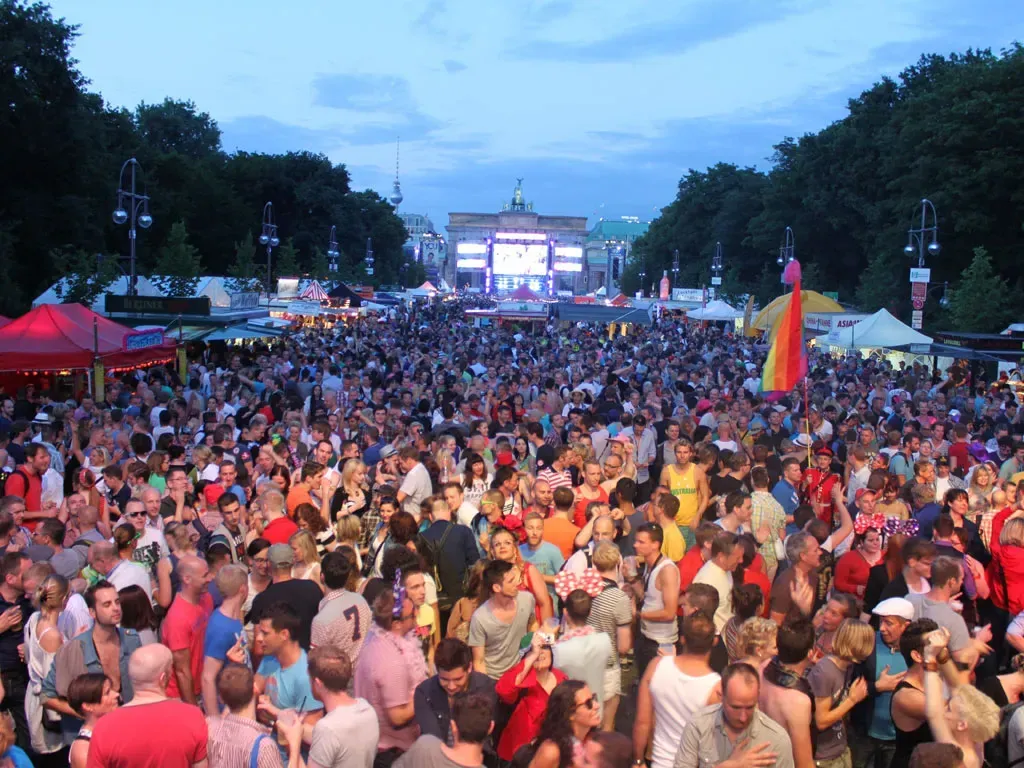
Issues That Guarantee Undercounting No Matter Who Does The Studies
Privacy Matters: Issues in Disclosing Sexual Orientation
When we try to count the number of gay people in the U.S., one of the biggest hurdles we face is the issue of privacy. It's deeply personal to disclose one's sexual orientation. People might feel uncomfortable or even scared to disclose this information due to fear of discrimination or harassment.
Furthermore, in some states and areas, there are still laws and societal norms that are not friendly towards the gay community. This fear of potential backlash makes it hard for researchers to get accurate data. We need to remember that behind each data point is a human being, deserving of respect and dignity. It's vital that data collection methods ensure privacy and confidentiality to make people feel secure in sharing their experiences.
Beware of the Bias: Sampling and Surveys
In the world of statistics and surveys, bias is like a sneaky gremlin. It can sneak into our results without us even noticing, messing up our data. One type of bias that often pops up is sampling bias. This is when the people we ask aren't a good representation of the entire group we're interested in.
For instance, if we only ask people in big cities about their sexual orientation, we're going to miss out on the experiences of people in smaller towns or rural areas. Or, if we only do online surveys, we might miss older generations who might not be as tech-savvy. This can skew our results and paint an incomplete picture of the gay population in the U.S.
The Desire to Fit In: Response and Social Desirability Bias
Another sneaky gremlin in our research process is response bias, especially one type called social desirability bias. This happens when people answer questions in a way that they think will be viewed favorably by others.
When asking about sensitive topics like sexual orientation, people might not be truthful if they fear judgment or stigma. They might say what they think the researcher, or society, wants to hear, rather than their true feelings or experiences. This can lead to underreporting of the number of gay individuals and makes it difficult to get accurate data.
Reaching Everyone: Diversity in Communities and Subgroups
One of the biggest challenges in quantifying the gay population is the sheer diversity of the community. The gay community is not a single, homogenous group. It's made up of diverse subgroups, each with its own unique experiences and challenges.
Some groups, like gay individuals from ethnic minorities or those with lower socioeconomic status, might be harder to reach or less likely to participate in surveys. Additionally, younger individuals might be more comfortable with disclosing their sexual orientation compared to older generations. This poses a challenge in ensuring that all voices within the gay community are heard and represented in our data.
Gathering data on the number of gay individuals in the U.S. is no small feat. It's a delicate balance of respecting privacy, navigating biases, and ensuring that we capture the diversity within the community. Each challenge presents an opportunity for us to learn, grow, and refine our methods, bringing us one step closer to answering the question: "How many gay people are there in the U.S.?"
A Closer Look at Strengths and Liabilities of Different Methods
Population-Based Surveys: The Classic Approach
In the realm of data collection, population-based surveys have long been the go-to method. They're designed to gather data from a broad cross-section of individuals, directly asking questions about their lives, beliefs, and identities. In the context of estimating the number of gay people in the U.S., these surveys play an essential role.
They allow researchers to gather large-scale data, providing an overarching view of sexual orientation across diverse populations.
But, as reliable as this classic method might seem, it's not without its challenges. These surveys rely heavily on the honesty of self-reported data. In the case of sexual orientation, a deeply personal and sometimes stigmatized topic, respondents might not feel comfortable being entirely truthful, potentially leading to underreporting.
Additionally, response bias, that pesky gremlin, can sneak in, particularly when participation in the survey is voluntary. Certain groups of people might be less likely to respond, skewing the representation in the data.
For example, people living in more remote areas or those less comfortable with written surveys may be less likely to participate.
And let's not forget sampling bias, which can occur when the survey sample doesn't accurately represent the broader population. Imagine conducting a national survey, but most respondents live in urban environments - this wouldn't give us a full, accurate picture of the gay population in the U.S.
Online Data Collection: The New Kid in Town
Online data collection is akin to the new kid in the town of data collection methods. This new kid brings lots of promise: it's fast, efficient, and can reach people far and wide. People can answer questions in their own time and space, potentially making them feel more comfortable when answering sensitive questions about sexual orientation.
But this new kid also faces challenges. For one, not everyone has equal access to the internet. Folks in rural areas or those with lower economic resources may not have reliable internet access. This digital divide means that these groups may be underrepresented in online data collection.
Privacy also poses a significant concern. While online surveys can be conducted anonymously, data security can still be a worry for some individuals. They may fear that their responses might be tracked back to them, making them less likely to disclose their sexual orientation honestly and openly.
Experimental Methods: Pioneering the Future
As we strive for more accurate data, researchers are exploring new frontiers with experimental methods. These methods, including techniques like the "veiled method" or indirect questioning, offer potential solutions to some of the biases and privacy concerns of traditional surveys.
The "veiled method", for instance, presents questions in a way that preserves the anonymity of the respondent even when discussing sensitive topics. This method can reduce social desirability bias and increase the honesty of responses.
However, as with any trailblazing venture, these methods come with their own set of challenges. They're still in their pioneering phase, meaning they require further testing and validation. They're also more complex to design and interpret, necessitating advanced statistical knowledge.
Understanding the number of gay people in the U.S. is a complex task, requiring a delicate balance of various data collection methods. Each method, from the classic population-based survey to the modern online data collection and the pioneering experimental techniques, offers unique strengths but also carries its own set of liabilities. Our journey to accurately quantify the gay population continues as we learn, adapt, and innovate in our data collection methods.
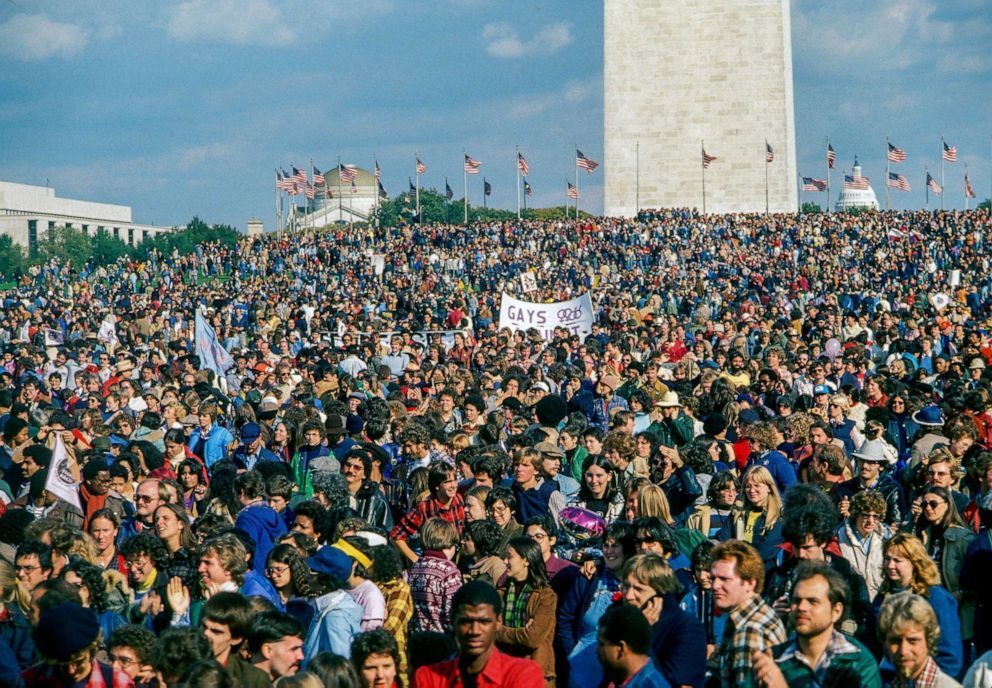
Three Studies Using Three Different Survey Methods
Study 1: Pioneering Efforts by The Williams Institute
The Williams Institute, a research center based at UCLA Law, has been at the forefront of research on the LGBTQ+ community in the U.S. Over the years, their studies have played a crucial role in shaping our understanding of the gay population.
One of their most significant contributions is their estimates of the gay population in the U.S. Using data from various national surveys, they've provided us with valuable insights. Their research shows that approximately 4.5% of adults in the U.S. identify as LGBTQ+.
The impact of their work is far-reaching. It's not just about the numbers - their research helps shape policies and awareness about the LGBTQ+ community. However, their approach is not without challenges.
They acknowledge that due to the complexities of gathering such data, their estimates might be lower than the actual number. Their studies, like all, must grapple with the issues of privacy, self-reporting, and potential bias in the data.
Study 2: Pew Research Center’s In-depth Analysis
Pew Research Center is another important player in the field. Their national survey of LGBT Americans offers detailed insights into the attitudes, experiences, and identities of the LGBTQ+ community.
One of their most significant findings was that about 3.5% of adults in the U.S. identify as lesbian, gay, or bisexual, with another 0.3% identifying as transgender.
But what made this study special was its in-depth exploration of the community's experiences. They found that a significant number of LGBT adults had been subjected to discrimination, and many struggled with the decision to disclose their sexual orientation.
Like the Williams Institute, Pew had to navigate the challenges of collecting data on a sensitive topic. Their findings not only shed light on the numbers but also bring to focus the real-life experiences of the LGBTQ+ community, reminding us of the human stories behind the data.
Study 3: The National Survey of Sexual Health and Behavior's Approach
The National Survey of Sexual Health and Behavior (NSSHB), conducted by the Center for Sexual Health Promotion at Indiana University, took a slightly different approach.
Instead of focusing solely on identity, they explored people's sexual behavior and attractions, providing a more nuanced understanding of sexual orientation in America.
Their findings showed that while a smaller percentage of adults identified as gay or lesbian, a larger percentage reported having same-sex experiences or attractions. For instance, they found that around 7% of women and 8% of men reported a same-sex sexual experience.
However, like the other studies, the NSSHB faced its own challenges. One significant issue was the difficulty of ensuring the diverse experiences within the U.S. population were adequately represented. Their study reminds us that sexual orientation is complex, encompassing identity, behavior, and attractions.
In conclusion, each of these studies offers valuable insights into the gay population in the U.S. They've faced challenges and navigated complex issues to provide us with a better understanding of the LGBTQ+ community.
And yet, they also show us that there's still more to learn, more stories to uncover, and more voices to hear. Each new study brings us one step closer to answering the question: "How many gay people are there in the U.S.?" and provides us with a richer, deeper understanding of the diverse experiences within the LGBTQ+ community.
Why Accurate Data on the Gay Population Matters
Policy-Making and Social Justice: Data Drives Action
When it comes to policy-making and social justice, having accurate data on the gay population is like having a compass in a complex landscape. It helps guide decisions, ensures resources are allocated effectively, and underlines the need for certain rights and protections.
First, let's talk policy. Whether it's in healthcare, education, housing, or employment, laws and regulations need to be informed by accurate data. When we have a clear picture of the size and distribution of the gay population, lawmakers can design more inclusive policies. For example, understanding the specific needs of the gay community in healthcare can lead to better health policies and services.
Then, there's the fight for social justice. Accurate data can help raise awareness of inequalities faced by the gay community. It can highlight disparities in areas like income, employment, health outcomes, and more. This data can be a powerful tool in advocating for equal rights and opportunities.
The Impact of Miscounting: A Balancing Act
On one hand, undercounting the gay population can lead to their needs being overlooked. If policy-makers believe there are fewer gay individuals than there really are, they might not allocate sufficient resources to services for this community. This could mean inadequate healthcare services, fewer educational programs addressing LGBTQ+ issues, or not enough legal protections against discrimination.
On the flip side, overcounting can also have negative effects. It might lead to an over-allocation of resources, drawing them away from other areas that might also be in need. It can also give a false impression of the level of representation and inclusion of the gay community in society.
So, getting the numbers right is a bit of a balancing act. It's about ensuring that resources are distributed fairly and that every individual's needs are taken into account. It's also about recognizing and validating the presence of the gay community in our society.
Beyond the Numbers: The Human Aspect
Finally, it's important to remember the human aspect behind these numbers. Each data point represents an individual with their own unique story and experiences.
Accurate data on the gay population doesn't just tell us about the size of this community; it helps shed light on their experiences, challenges, and triumphs. It helps us understand the diversity within this community and reminds us of the importance of inclusivity and representation.
In the end, the quest to answer the question "How many gay people are there in the U.S.?" is more than just about counting numbers. It's about understanding and acknowledging the vibrant and diverse gay community within our society.
It's about ensuring that policies and services meet their needs and that their voices are heard and recognized. And while there are challenges in gathering this data, the importance and relevance of this task are clear. The data we gather and the studies we conduct all contribute to a more inclusive, equitable, and understanding society.
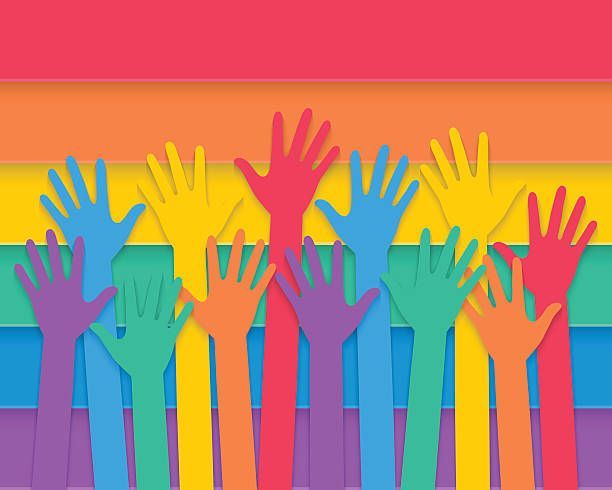
How We'll Count The LGBT Population In The Future
New Tech on the Block: Machine Learning and Big Data Analysis
As we navigate the complexities of data collection, we can look forward to innovative methodologies and technologies that may help us better estimate the gay population. Two potential game-changers are machine learning and big data analysis.
Machine learning, a form of artificial intelligence, can help analyze patterns and trends in vast amounts of data. It might help uncover correlations and insights that we might miss with traditional analysis methods. For example, machine learning could help identify patterns in survey responses, giving us a deeper understanding of the factors influencing self-disclosure of sexual orientation.
Big data analysis is another promising approach. As we generate more and more data in our digital world, we have the opportunity to analyze this information in novel ways. We could use this to understand the online behavior of individuals and communities, providing a new perspective on sexual orientation demographics.
However, these approaches come with their own challenges. Questions about privacy and data security are paramount when dealing with large amounts of potentially sensitive information.
The Intersectionality Lens: A Holistic Approach
As we look towards the future, it's clear that we need to take an intersectional approach to data collection. This means considering factors like race, ethnicity, and socioeconomic status in conjunction with sexual orientation.
Understanding how these factors intersect can help us better understand the experiences and needs of the gay community. For example, a gay individual from a minority ethnic group might face different challenges and experiences than a gay individual from a majority group.
Incorporating intersectionality into our data collection methods can help us design better policies and services that take into account the diverse experiences within the gay community. However, this requires careful and sensitive data collection, considering the complexities of people's identities and experiences.
The Digital Frontier: Social Media and Digital Platforms
Finally, the role of social media and digital platforms in future data collection cannot be overstated. These platforms have become integral parts of our lives, providing valuable insights into our behaviors, identities, and communities.
Social media platforms could provide new avenues for understanding the gay community. Through analyzing trends, communities, and discussions, we might gain new insights into the size and diversity of the gay population.
Digital platforms could also offer new ways to conduct surveys and studies. Online platforms can reach a wide range of individuals, potentially making data collection more inclusive and diverse.
However, using these platforms for data collection brings its own set of challenges. Questions of privacy, consent, and representation all need to be carefully considered.
In conclusion, the future of estimating the gay population in the U.S. is a dynamic one, shaped by new technologies, methodologies, and understandings. As we move forward, it's crucial to continue striving for more accurate, inclusive, and respectful data collection methods. Through combining traditional approaches with innovative techniques, we can hope to gain a deeper, more nuanced understanding of the diverse and vibrant gay community in the U.S.
Resources
The Williams Institute: This think tank at UCLA Law conducts rigorous, independent research on sexual orientation and gender identity law and public policy.
Gallup: Gallup frequently conducts and publishes polls related to LGBT identities and issues.
Pew Research Center: Pew Research Center conducts public opinion polling, demographic research, and other data-driven social science research, including topics related to the LGBT community.
Centers for Disease Control and Prevention (CDC): The CDC provides health resources and data for LGBT individuals, including some data on demographics.
National LGBTQ Task Force: The National LGBTQ Task Force advances full freedom, justice, and equality for LGBTQ people, and their site includes reports and advocacy resources.
Human Rights Campaign (HRC): As one of the largest LGBT advocacy organizations in the U.S., the HRC conducts research and publishes reports on a variety of LGBT-related topics.
GLAAD: GLAAD tackles tough issues to shape the narrative and provoke dialogue that leads to cultural change.
The Trevor Project: The Trevor Project provides crisis intervention and suicide prevention services to LGBT youth. They also conduct research and publish reports on the mental health of LGBT youth.
Movement Advancement Project (MAP): MAP's mission is to provide independent and rigorous research, insight and analysis that help speed equality for LGBT people.
American Psychological Association (APA): The APA provides a range of resources on LGBT issues, including research articles, reports, and psychological perspectives on LGBT identities.

